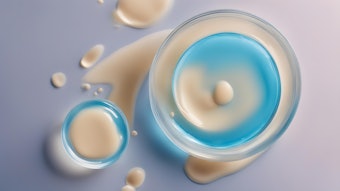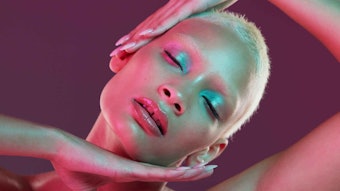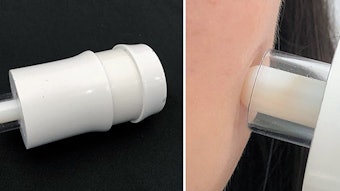
The predictive brain constructs rather than observes product benefits, and imaging can reveal stages of this construction. This understanding was employed to design fragranced products that influence mood, perception and cognition, as demonstrated here.
This article is only available to registered users.
Log In to View the Full Article
The predictive brain constructs rather than observes product benefits, and imaging can reveal stages of this construction. This understanding was employed to design fragranced products that influence mood, perception and cognition, as demonstrated here.
According to Mintel’s Global New Product Development (GNPD), the number of beauty and personal care products launched with neuroscience-based claims increased from almost zero in 2020 to 250 in 2025. Fueling this growth, among other factors, are advances in neuroscience that focus on how fragrances can influence consumer mood.
This article explores such – but it goes beyond the well-established link between fragrance and consumer mood. Detailed here is the emerging scientific concept of the predictive brain and the use of imaging to explore its response to fragrance. The goal was to leverage the predictive brain to enhance the experience of using personal care products, as will be shown.
To understand how to leverage neuroscience in the context of personal care, it is first important to consider what the brain's fundamental function is.
The Predictive Brain
When it comes to brain function, most people, including many scientists, would immediately think about sensing, feeling and thinking. While these are critical functions, recent neuroscience points to the brain's most critical role as being able to predict, which becomes especially important in today’s uncertain and increasingly information-rich world.1
The predictive capability of the brain plays not merely a supporting role. It fundamentally shapes the perception of others and the surrounding world. In essence, the brain maintains and updates a rich, coherent perception from remarkably sparse, incomplete sensory information, constantly predicting the external world, informed by current experience and memories.
The predictive brain focuses its energy on filling in the gaps where new sensory input is mismatched with its predictions, which is more efficient than piecing together its perception of the external environment from scratch, moment-to-moment.
A striking example of a predictive brain in action is the visual modality. Even though the eye is only able to perceive color in a small subset of the visual field, the brain creates a colorful and detailed visual perception across the whole visual field.2
Affect as Information: How You Feel Determines How You View the World
 Findings suggested that certain fragrances could trigger updates in the brain’s visual representation of a face – even one’s own – making it appear more attractive and confident at a very early, pre-conscious stage of processing.Image by New Africa at Adobe Stock
Findings suggested that certain fragrances could trigger updates in the brain’s visual representation of a face – even one’s own – making it appear more attractive and confident at a very early, pre-conscious stage of processing.Image by New Africa at Adobe Stock
Fragrances are widely used in consumer contexts and their impact on mood has been well-documented. This is because olfaction and emotion processing are intrinsically linked – even overlapping in terms of some of the brain areas involved, such as the amygdala.3
This connection provides the sense of smell with direct access to how a person feels in a way that is not typically seen in other sensory modalities, giving the sense of smell the ability to affect mood. This is demonstrated by the fact that fragrances can activate emotional brain areas without conscious awareness.4
The predictive brain uses affect – the experience of feeling and emotion – as information for deciding what to update within its world model. This means any changes in one’s emotional state can change their perceptions of others. To test this hypothesis, Unilever teamed up with an expert in chemosensory perceptiona.5
Test Method: Visual + Olfactory Cues
For the described study, 22 participants (including 12 females, mean age = 25) were shown facial images, some of which were visually manipulated with more or less wrinkles and blemishes. These images were combined with different fragrances spanning a spectrum from highly unpleasant (fish odor) to pleasant (rose odor), with three intermediate mixtures.
Participants rated the attractiveness – from extremely unattractive to extremely attractive – and age perception of the facial images – from < 25 years to > 60 years, with ticks at 5-year increments – as as well as the pleasantness of the fragrance – from extremely unpleasant to extremely pleasant – on 100-point visual analog scales.
Visual + Olfactory Perception Results
Initial findings, published elsewhere,5 aligned with expectations: images with more wrinkles and blemishes were rated as less attractive and older, while those with fewer were rated as significantly more attractive and younger (all p < .001). Upon the introduction of fragrances, the pleasant fragrance significantly boosted attractiveness perception (p < .001) but not age perception (p > .05).
Strikingly, this increase in effect on attractiveness perception due to a pleasant fragrance was additive and comparable in magnitude to the boost achieved by reducing wrinkles and blemishes. This finding is profound and suggests that fragrances can work in synergy with the benefits delivered through skin care actives, reinforcing benefits where mental representations are more emotionally driven – e.g., attractiveness – but are potentially less impactful when we rely more on deliberate processing – e.g., age perception.
Impact of Fragrance on Sensory Processing
The question remained whether fragrances can, in addition to boosting one’s level of positivity, directly modulate perception at the level of sensory processing. To measure such, electroencephalography (EEG) was employed.
As is well-known, this non-invasive technique measures the electrical signals generated by neurons communicating in the brain. EEG allows researchers to plot brain responses to stimuli with millisecond precision, creating event-related potentials (ERPs).6 These ERPs have characteristic wave shapes representing the three different stages of the brain's processing a stimulus:
- Sensory processing occurs within the first 100-200 milliseconds,
- Cognitive processing occurs around 200-400 milliseconds (e.g., recognizing something as "same" or "different") and
- Emotional processing unfolds after approximately 400 milliseconds.
Test Method: Sensory Processing
In this study, conducted by Unilever with the University of Liverpool,7 22 female participants, aged 19-30 years, viewed images of themselves taken under controlled conditions and neutral images of other females from a published database. During half of the trials, a bodywash with a specially designed fragranceb was presented alongside the images, while brain responses were measured using 129-channel EEG equipment; during the other half, a clean air environment was maintained. Participants also rated the images for attractiveness, confidence, femininity and glamor.
Sensory Processing Results
The initial behavioral results confirmed expectations: the pleasant body wash fragrance boosted rated attractiveness and confidence for both self and other images. This finding came from the ERP analysis of the EEG data, which identified a significant cluster of brain activity in the time period of 75 ms - 115 ms. Here, the body wash fragrance led to more pronounced brain responses to facial images of the self and others, as indicated by a more negative N1 wave (see Figure 1).
Differences between the body wash fragrance and the clean air condition persisted across the stages of information processing – i.e., statistically significant differences were observed at 170 ms - 290 ms and 425 ms - 580 ms.
Thus, brain activity in response to the images of self and others was modulated in the presence of the fragrance as early as within 100 ms – faster than the blink of an eye.8 This very early change indicates that the fragrance was not merely influencing emotional processing but was directly altering the sensory perception of the images themselves.
What’s more, in previous work, Cook, et al.,9 had demonstrated that the pleasant fragrance of jasmine could change later (i.e., emotional) brain processing, but it did not change early stage (i.e., sensory perception) brain processing. Hence, the effect in the present work was potentially tied to the specifically designed body wash fragrance and not to a general sense of pleasantness.7
These findings represent a shift in understanding the impact that fragrances can have on the predictive brain. It suggests that certain fragrances can trigger updates in the brain’s visual representation of a face – even one’s own – making it appear more attractive and confident at a very early, pre-conscious stage of processing.
Enhancing Specific Emotional States and Cognitive Performance
The studies described thus far detail the profound impact that fragrances can have on the predictive brain. However, the emotions targeted were limited in the range of the positive to neutral to negative spectrum. A more recent study15 therefore aimed to demonstrate that more specific emotional states and associated brain activities can be promoted.
Test Method: Fragrance and Emotional States
Four body washes were developed, each with a specially designed, unique fragrance selected to deliver emotional states that differed in their level of arousal – i.e., energizingc or relaxingd. Recognizing the intrinsic link between olfaction and emotion processing in the brain, this study measured self-reported emotional experiences as well as brain activity using a 14-channel EEG headsete.
Forty-five healthy female participants, ages 18-35, were recruited for the experiment. Participants smelled unbranded versions of the four bodywash variants for 2 min and their brain activity was measured at two different times. After this, participants rated all fragrances in terms of arousal and pleasantness by answering the questions: “How stimulating did the fragrance smell?” and “How pleasant did the fragrance smell?” respectively.
Results: Fragrance and Emotion
Participants' self-reported ratings confirmed that the fragrances aligned with their intended positioning in terms of pleasantness and stimulating qualities. Here, the energizing fragrances scored significantly higher on both questions than the relaxing fragrances (all p values < 0.05).
To see how the four body wash fragrances modulated brain activity, EEG signals were decomposed into alpha (8–12 Hz), beta (16–30 Hz) and gamma power (30 – 45 Hz) bands.10 Analyzing these frequency bands provides insights into how different fragrances impact emotional state via their modulatory effect on brain activity.
The two relaxing body wash fragrances led to significant increases in EEG alpha power on frontal and posterior electrodes (all p values < 0.05), reflecting brain oscillations associated with states of relaxation and calmness.11
Conversely, the two energizing fragrances resulted in increased beta and gamma power, again on frontal and posterior electrodes (all p values < 0.05). Beta power is linked to heightened energy, focus and alertness,12 while gamma power is associated with information processing.13 Taken together, the brain activity data clearly identified two distinct fragrance clusters in the body washes – those that boost energy and those that induce a relaxed yet alert state.
Test Method: Fragrance and Cognitive Performance
To further explore the benefits provided by the fragrances, one of the energizing body wash fragrancesf was tested in a sample of 66 women ages 18-44 years. Participants completed the Attentional Network Test (ANT),14 Fan et al., 2002 a widely used task that measures cognitive performance on three distinct attentional endpoints – alerting, orienting and executive – which regulates when, where and to what we deploy our attention to, respectively.
Task performance was compared while participants were exposed to the fragrance and to a control condition (smelling clean air). Results indicated the energizing fragrance significantly facilitated the orienting attentional network (p < 0.05 vs. control) but not the alerting or executive networks. This suggests the fragrance promoted the faster deployment of the brain’s attention to where its predictions of the external world may need updating based on external information. This appears consistent with increases in beta and gamma power from the EEG and performance enhancements during heightened mental energy and focus.
Future Direction and Conclusion: Fragrances that Leverage the Predictive Brain
One might argue that to able to fully leverage neuroscience for fragrance-driven benefits in personal care requires a fundamental shift in how we think about the brain. The core argument is that the brain is a predictive organ and any product benefits, whether emotional, visual or cognitive, are not simply observed but constructed. This represents an exciting opportunity, as it stretches the benefit space that can be achieved through fragrance to beyond merely feeling good.
In the personal care context, brain imaging, particularly advanced EEG techniques, is a powerful tool to complement traditional self-report and behavioral or clinical measures. It allows us to understand the process of perception in addition to just the outcome.
In addition, being able to provide well-supported claims requires a multi-method approach where consumers’ reports ensure benefits are perceivable while brain imaging provides insights into what is happening in the brain as these perceptions form. Ultimately, the goal is to develop products that are not only biologically efficacious, but also optimize the perceived benefits by leveraging the predictive brain.
Footnotes
a Monell Chemical Senses Center
b Lux Magical Orchid Body Wash
c Olly Revive Mood + Skin and Bright Mood + Skin
d Olly Calm Mood + Skin and Renew Mood + Skin
e Emotiv
f Bright Mood + Skin
References
1. Hutchinson, J.B. and Barrett, L.F. (2019). The power of predictions: An emerging paradigm for psychological research. Current Directions in Psychological Science, 28(3) 280-291.
2. Lima-de-Faria, A. (2014). Brain imagery: Visual perception of form, color and motion. In Lima-de-Faria, A., ed., Molecular Origins of Brain and Body Geometry: Plato's Concept of Reality is Reversed, pp. 165-170, Springer International Publishing.
3. Soudry, Y., Lemogne, C., Malinvaud, D., Consoli, S.M. and Bonfils, P. (2011). Olfactory system and emotion: Common substrates. European Annals of Otorhinolaryngology, Head and Neck Diseases, 128(1) 18-23.
4. Kontaris, I., East, B.S. and Wilson, D.A. (2020). Behavioral and neurobiological convergence of odor, mood and emotion: A review. Frontiers in Behavioral Neuroscience, 14, 35.
5. Seubert, J., Gregory, K.M., Chamberland, J., Dessirier, J.-M. and Lundström, J.N. (2014). Odor valence linearly modulates attractiveness, but not age assessment, of invariant facial features in a memory-based rating task. PLOS ONE, 9(5) e98347.
6. Luck, S.J. (2014). An introduction to the event-related potential technique. MIT press; available at https://mitpress.mit.edu/9780262525855/an-introduction-to-the-event-related-potential-technique/
7. Davies-Owen, J., Roberts, H., … Fallon, N., et al. (2024). Beauty is in the nose of the beholder: Fragrance modulates attractiveness, confidence and femininity ratings and neural responses to faces of self and others. Behavioral Brain Research, 465, 114932.
8. Nyström, M., Andersson, R., Niehorster, D.C., Hessels, R. S. and Hooge, I.T.C. (2024). What is a blink? Classifying and characterizing blinks in eye openness signals. Behavior Research Methods, 56(4) 3280-3299.
9. Cook, S., Fallon, N., Wright, H., Thomas, A., Giesbrecht, T., Field, M. and Stancak, A. (2015). Pleasant and unpleasant odors influence hedonic evaluations of human faces: An event-related potential study. Frontiers in Human Neuroscience, 9, 661.
10. Pivik, R.T., Broughton, R.J., Coppola, R., Davidson, R.J., Fox, N. and Nuwer, M.R. (1993). Guidelines for the recording and quantitative analysis of electroencephalographic activity in research contexts. Psychophysiology, 30(6) 547-558.
11. Cahn, B.R. and Polich, J. (2006). Meditation states and traits: EEG, ERP and neuroimaging studies. Psychological Bulletin, 132(2) 180.
12. Kamiński, J., Brzezicka, A., Gola, M. and Wróbel, A. (2012). Beta band oscillations engagement in human alertness process. Intl J Psychophysiol, 85(1) 125-128.
13. Singer, W. and Gray, C.M. (1995). Visual feature integration and the temporal correlation hypothesis. Annual Review of Neuroscience, 18(1), 555-586.
14. Fan, J., McCandliss, B.D., Sommer, T., Raz, A. and Posner, M.I. (2002). Testing the efficiency and independence of attentional networks. J Cognitive Neurosci, 14(3) 340-347.
15. Giesbrecht, T., Shen, J., Thyson-Carr, J. and Waters, D. (2025). Fragrances and brain waves: Using electroencephalography to map brain responses to body wash variants (internal report).










